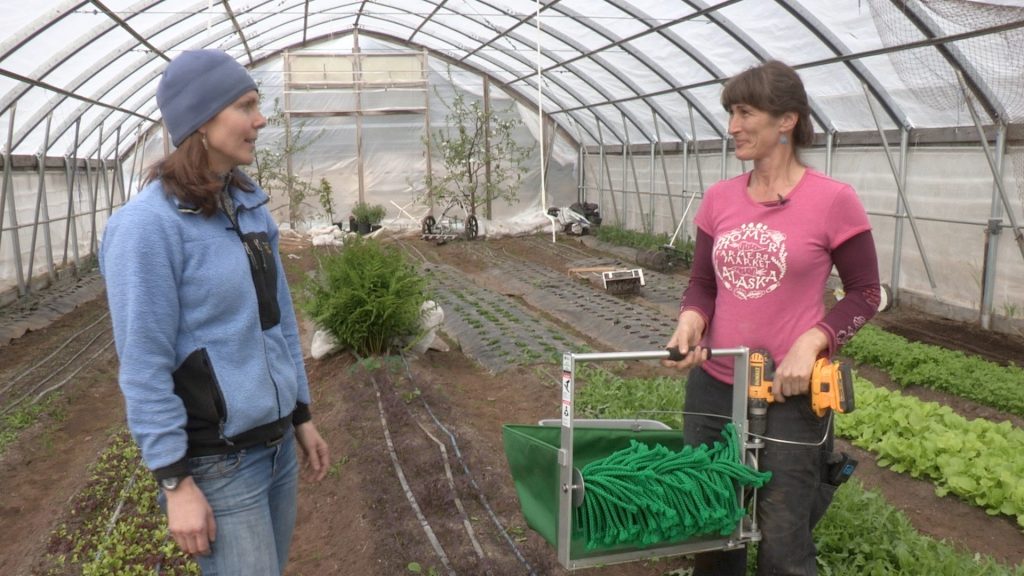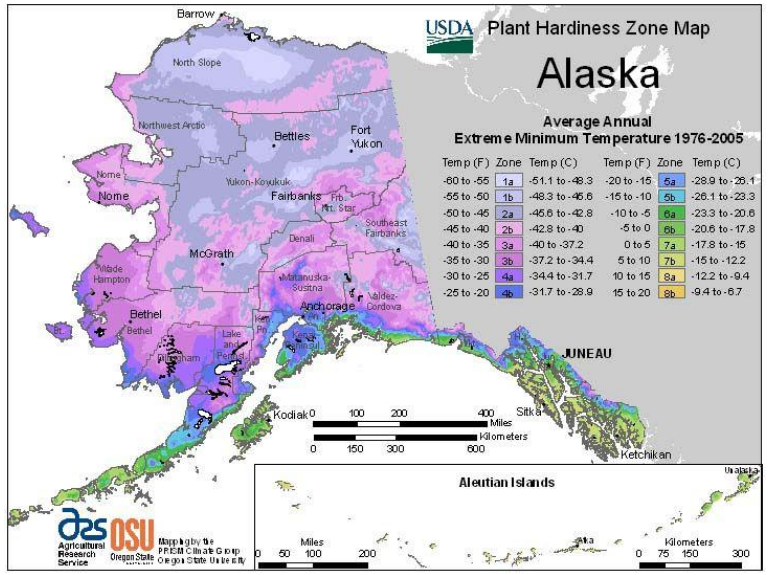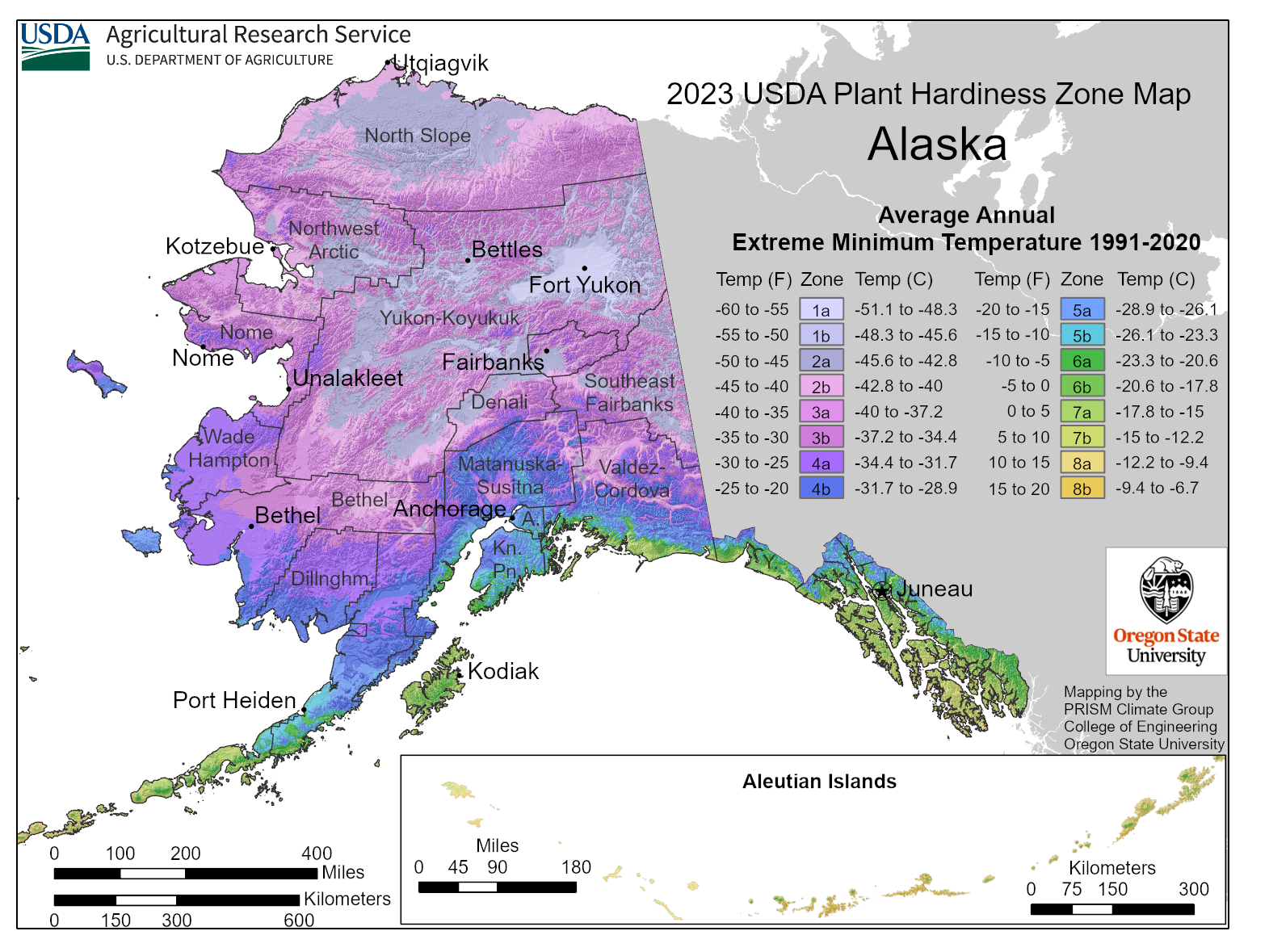In spring of 2018 I had the happy excuse to visit five farms in Homer–to film high tunnels and season extension techniques for a YouTube series called, In the Alaska Garden with Heidi Rader. While I was there, I kind of fell in love with those farmers. Their passion, tenacity, and creativity was infectious and rekindled my own dream of being a farmer I discovered they’re innovating in lots more ways than high tunnels. I say farmers but they all also identify strongly with the term “market gardener”–a term that describes farmers who grow food predominately for direct markets using mostly low-tech, hand tools on small acreage. They are voracious readers, watchers of YouTube videos, and sharers of ideas. Some of their favorite authors and vloggers include Eliot Coleman (The Four Season Farm), Ben Hartman (The Lean Farm), Curtis Stone (The Urban Farmer), and Jean-Martin Fortier (The Market Gardener).

Carey Restino demonstrates how to cut greens with her Quick Cut Greens Harvester. The harvester is powered by a cordless drill. Photo by Jeff Faye.
My first stop was Homer Hilltop Farm where Carey Restino has carved out a farm that winds through forest and devil’s club on Diamond Ridge. Carey exuded energy as she showed me her high tunnels and hoop houses that have helped her dramatically extend her season in a microclimate that is cooler than Homer proper due to its higher elevation. She had an impressive lineup of the latest, low-tech tools designed for market gardeners including a six-row seeder, a Quick Cut Greens Harvester, and a soil tilther to name a few. Continue reading


